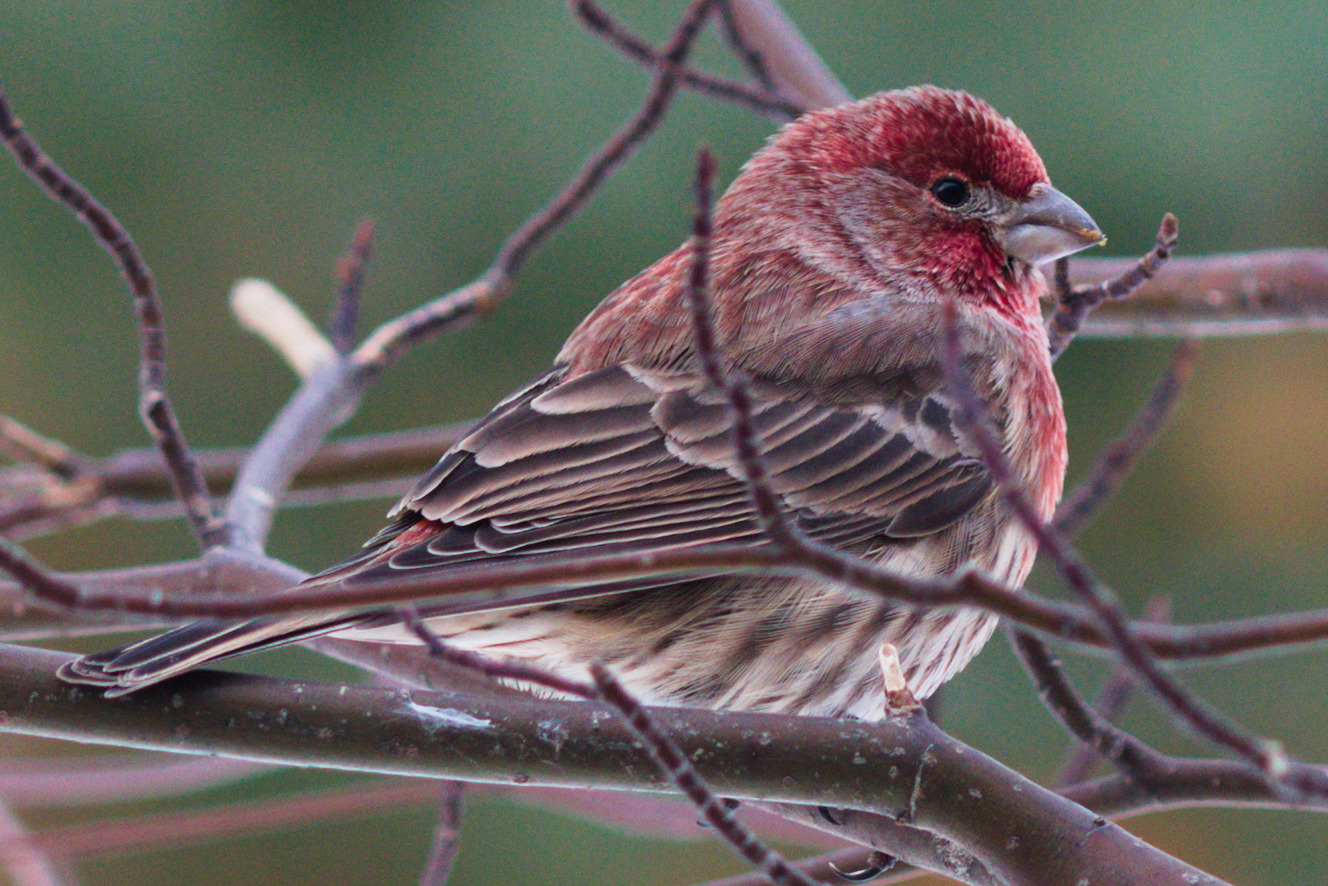Several fairly aggressive little songbirds tend to dominate the bird feeder, giving the house sparrows a run for their money. Like the sparrows, these little birds are not native to Owl Acres but have moved in to stay. Their story is similar to that of their rivals the house sparrows, but took place nearly a hundred years later.
In the 1930s, wild house finches (Haemorhous mexicanus) were captured in their native habitat in the Southwestern United States. Found on the West Coast from Oregon to Mexico and east as far as the Great Plains, they inhabited deserts, chaparral, grasslands and open woods. Upwards of 100,000 mostly male finches were captured and shipped to New York pet store owners for resale as Hollywood finches. Trade in wild birds was already illegal, and in 1940, pet store owners, threatened with prosecution, simply released their stock of birds into the wild. The birds made the best of their strange new environment and began settling into the city and surrounding landscape. They thrived near people and built their nests on window ledges, in ivy, street lamps, vents, and hanging planters—anywhere they could get a foothold. Over the next 50 years, the house finch population exploded. Highly adaptable and rather aggressive birds, the house finches moved into farms and fields, woods and grasslands, displacing some native species in the process. Today their range covers the entire continent except for northern Canada.
House finches are strictly vegetarian. They eat seeds and fruits almost exclusively. If they’re not chowing down on the bird feeder, they’re foraging for seeds on the ground or perching high in a fruit tree enjoying its bounty. They fly in an undulating, bouncy way that displays the male’s red rump and the light tips on their flight feathers.
Finches can raise up to six broods of two to four chicks each year. That’s a lot of baby finches, and might account for their rapid spread and increasing numbers. The expansion of edge habitat as land is converted from forest to suburbia also contributes to their success.
House finches weigh less than an ounce, with a wingspan of eight to ten inches. They are slightly smaller and more slender than the house sparrow.
Male house finches have red around their faces, a red breast, and a red rump. Otherwise they’re brown with white wing bars and white tips on their flight feathers. Underneath they are white. The females are mostly just streaky grayish brown on top with white wing bars and white tips on their flight feathers. Underneath they’re also a streaky white. Females have no red markings.
The intensity of the male’s red markings depends on the amount of carotenoid pigments in his food. Fruits and berries are excellent sources for the red pigment. The more of this high-quality food he eats, the redder his markings. The females take note of this, and choose the male with the reddest breast, presuming that he will be the best provider.
House finches don’t migrate. Instead, they flock together with other songbirds and spend the winter close together for protection. In the winter, their vocalizations are mostly calls to communicate. In the spring and summer, their songs morph into a pleasant long jumbly warble that often ends with an ascending trill or buzz.
On Owl Acres, a flock of about 20 song birds, including finches, juncos, chickadees, nuthatches, sparrows, and downy woodpeckers, keeps us filling the birdfeeder especially often when winter temps drop below zero. Cardinals, blue jays, hairy- and red-bellied woodpeckers and starlings have their go at it as well. It’s a busy place!
Photo from Wikimedia.org by Mathieu Landretti Alt text: Common House Finch perches amid small branches in a tree. Brown body, and a brown-red head and neck, and a short, cone shaped beak.

2 comments
Very interesting. I had no idea they were captured and sold elsewhere in America
I forgot to mention that a flock of house finches is known as a charm of finches.